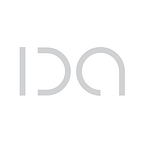The PUMP Act: Workplace Design with Moms in Mind
In 2010, President Obama passed the Break Time for Nursing Mothers Provision as a part of the Fair Labor Standards Act. While this provision was a huge move in the right direction, an unintended legal technicality in other parts of the FLS Act meant only 1 in 4 women were protected — until now. In January 2023, President Biden expanded rights for breastfeeding women in the workplace through the Providing Urgent Maternal Protections (PUMP) for Nursing Mothers Act. Here’s a look at what this act means for women, workplace design, and emerging technology.
A Little History
It’s no secret: the U.S. has arguably the most limited (a nice way of saying, “the absolute worst”) maternal care of any developed nation in the world. Despite spending more money on maternal care than any country globally, the U.S. has the highest maternal mortality rate among similarly wealthy nations. It remains one of only five countries in the world with zero weeks of federally protected maternity leave, creating added pressure for women to return to work quickly. As a result, rates of postpartum depression and anxiety are higher in women without paid maternity leave, a reality that continues to perpetuate racial and socioeconomic disparities in America.
While we have a long way to go in maternal care, President Obama’s efforts in 2010 laid the foundation for legal protections, employer education programs, and innovative technologies to support mothers’ workplace re-entry. If women can’t have the parental leave they need, the least they can have is accommodating workplaces (but really, we want the leave).
What the PUMP Act Means for Women
In addition to closing the legal loopholes of the 2010 Break Time Law to protect nearly 9 million women, the PUMP Act also increases access to enforcement provisions for employers who break the law. Of women in the workforce, 60% report that their employer does not provide appropriate time or space to pump during the workday. The PUMP Act gives immediate pathways for reporting claims and swift punishments for employers found in violation.
The PUMP Act also aims to reduce workplace discrimination against working mothers by validating and addressing claims of wrongful termination or sexual harassment, affecting working mothers at a rate of 65–74%. Protecting women from detrimental emotional and economic conditions will hopefully positively impact maternal mental health as well.
If you’re a mom newly back in the workplace, be sure to read up on the PUMP Act and know your rights. You deserve both time and adequate space to pump as you see fit.
The PUMP Act’s Impact on Workplace Design
The PUMP Act states, “nursing employees have the right to reasonable break time and a place, other than a bathroom, that is shielded from view to express breast milk while at work. This right is available for up to one year after the child’s birth.”
You read that right — not a bathroom. And while we’re on the subject, let’s also say not a broom closet or not a conference room that doesn’t lock. It’s high time we prepare for working moms by incorporating (enthusiastically, not reluctantly) Lactation Rooms or Mother’s Rooms into workplace design.
When considering a Mother’s Room, employers should look for a space in a low-traffic part of the office with a lockable door and ample electrical outlets. MOA Architecture lays out a beautiful vision for Lactation Rooms, including comfortable seating, washable textiles, a sink and microwave for washing and sanitizing parts, and lockers for storing equipment. Additionally, a minifridge, clothing hooks, extra outlets, sanitizing wipes, and a white noise machine make for a welcoming, functional, relaxing environment for women to pump.
While the room can have dual purposes, all employees must understand that nursing mothers take priority in utilizing the space. Creating a system for reserving the room allows mothers to rest assured the room will be available when they need it. If you have multiple nursing mothers in your workplace, consider heavy drapery dividers for privacy if additional rooms are not an option.
Innovations for Breastfeeding Moms in the Workplace
The challenge of retrofitting offices to accommodate nursing mothers has given rise to innovative solutions such Mamava and Nessel.
Mamava provides sleek and functional lactation pods that can be added to any facility. These pods come in three sizes: XL for wheelchair accessibility, Original for pumping or nursing, and Solo just for pumping. Each pod complies with all legal requirements and contains seating, shelving, clothing hooks, outlets, and a fan. App-based security allows registered users to reserve a pod and unlock it with their phones. Additionally, a Mamava membership enables nursing mothers to find any public lactation space nearby so they can pump on the go if they are traveling or working away from the office.
While Mamava is ideal for adding a space where there isn’t one, Nessel reimagined office furniture to be pumping-friendly. Nessel’s Lactation Stations look like a desk but convert into a clean, comfortable space to pump, complete with a plumbing-free sink, private fridge, and power outlets. The chair includes cup holders for bottles, and the desk includes a slide-out table for continued productivity (or relaxation). Nessel offers options to rent their Lactation Stations for employers looking to provide short-term support.
Let’s Keep Moving Forward
While the PUMP Act closes the gap of women who weren’t protected the first time, there is much more progress to be made in supporting women’s re-entry into the workplace. Employers, architects, facility managers, and colleagues must collectively advocate for nursing mothers by honoring their needs and providing adequate spaces. Proactively preparing for women to return after maternity leave makes them feel seen and supported, creates a mutual environment of appreciation, increases employee well-being, and improves retention.
